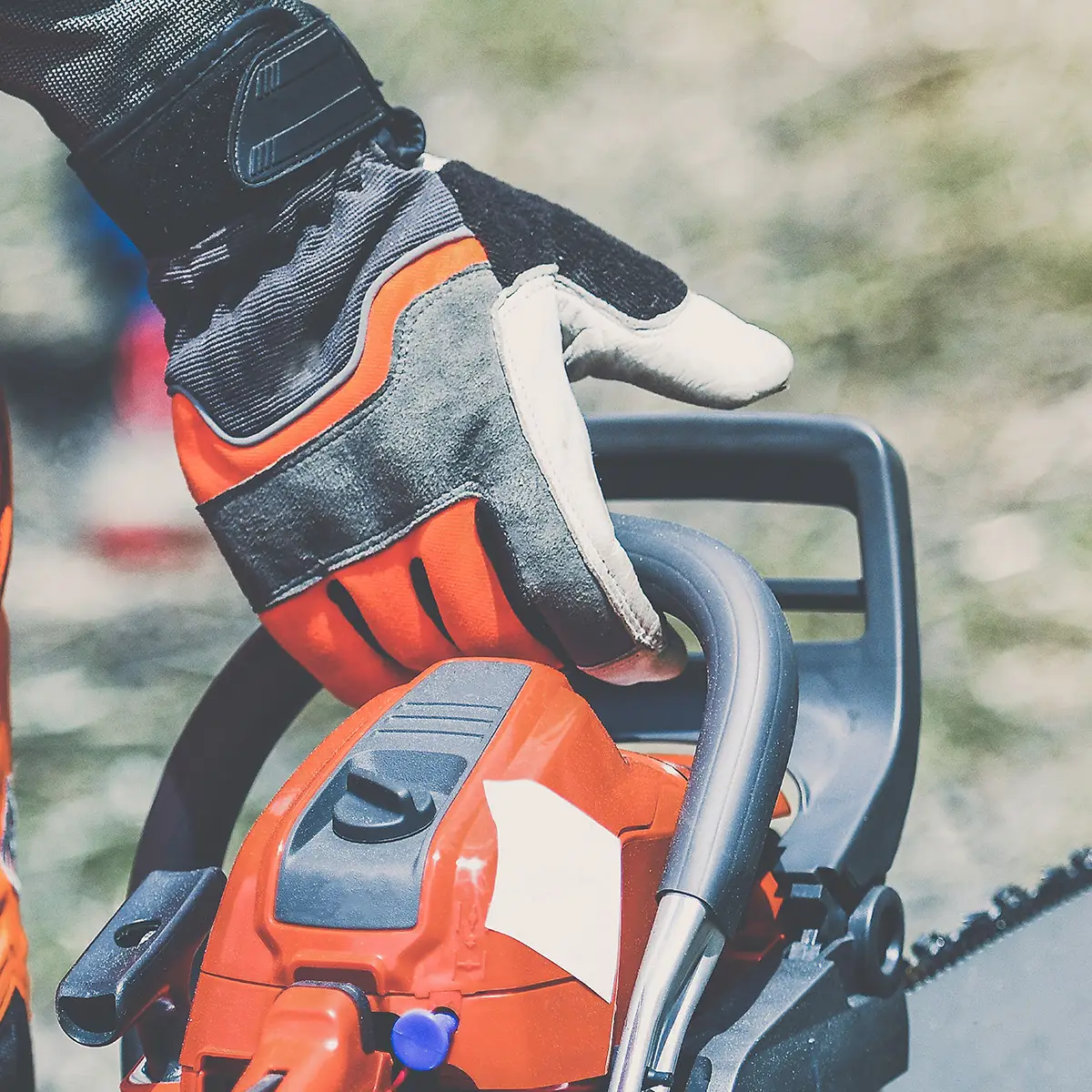How Do Anti-Vibration Gloves Work?

Anti-vibration gloves may seem simple, but they play a crucial role in reducing the impact of tool vibrations on your hands. These gloves are designed like regular work gloves, but with extra padding on the palms to absorb and reduce the amount of vibration that reaches your hands, wrists, and arms.
The type of padding can vary—some use gel, others foam or air pockets—but all serve the same purpose: to minimize the transmission of vibrations. However, it's important to note that these gloves don't offer much protection for your fingers, which are still vulnerable to the effects of long-term exposure.
If you're new to anti-vibration gloves, it's essential to understand their limitations. They aren't a complete solution for vibration hazards, but rather an added layer of protection. If you're looking for total safety, you should focus on using ergonomic tools, taking regular breaks, and minimizing exposure time.
The Impact of Vibrating Equipment on Workers
Why is vibration such a big concern? Prolonged exposure to vibrations can lead to serious health issues over time. These include conditions like Hand-Arm Vibration Syndrome (HAVS), Raynaud’s disease, and even carpal tunnel syndrome. It's not just about comfort—it's about long-term well-being.
Hand Arm Vibration Syndrome (HAVS)
HAVS is one of the most serious risks associated with vibration exposure. It causes permanent damage to nerves and blood vessels in the hands and arms, leading to symptoms like numbness, reduced grip strength, and difficulty healing wounds.
Raynaud’s Disease
Raynaud’s, also known as white finger syndrome, is another condition linked to vibration exposure. Normally triggered by cold, it can also occur due to damaged blood vessels from repeated vibration, even without extreme cold exposure.
Carpal Tunnel
Vibrations can also contribute to carpal tunnel syndrome. This happens when nerve damage occurs due to repetitive motion or direct vibration exposure. While ergonomic tools help, vibration itself remains a risk factor.
General Discomfort
Even if serious conditions aren’t yet present, daily discomfort from vibrations is real. Tingling, loss of feeling, and arm fatigue are signs that your body is being affected—and they’re preventable.
The key takeaway is this: vibration isn’t always immediately dangerous, but ignoring the warning signs can lead to irreversible damage. Listen to your body, take precautions, and make smart choices for your health.
Who Should Use Anti-Vibration Gloves?
While anti-vibration gloves aren’t a cure-all, they can be a useful addition to your safety routine. They are most effective when used alongside other preventive measures, like choosing low-vibration tools and taking regular breaks.
Anti-vibration gloves are particularly useful for workers who frequently use high-frequency tools like drills, saws, grinders, and sanders. These tools generate more vibration, making gloves a helpful supplement to overall safety practices.
However, it's important to remember that these gloves are not a substitute for proper ergonomics, training, and equipment selection. They are best used as an additional measure, not a primary solution.
Construction workers, mechanics, landscapers, and others who use power tools regularly can benefit from wearing anti-vibration gloves. But always choose a reputable brand and ensure the gloves meet recognized standards like ANSI S2.73 / ISO 10819.
What is ANSI S2.73 / ISO 10819?
This standard sets specific requirements for anti-vibration gloves. Unlike some other glove standards, it doesn't have levels—it's a pass/fail system. To qualify, gloves must have full palm coverage, no fingerless design, and padding no thicker than 8mm.


In addition to physical specifications, gloves must reduce medium-frequency vibrations by at least 10% and high-frequency vibrations by 40%. Meeting these criteria ensures better protection against the harmful effects of vibration exposure.
Gloves that meet the ANSI S2.73 / ISO 10819 standard provide a significant reduction in vibration transmission, making them a valuable choice for workers who rely on power tools daily.
A 40% reduction in high-frequency vibrations can make a real difference in preventing long-term damage. Always look for certified products to ensure quality and effectiveness.
Controversy Around Anti-Vibration Gloves
There's ongoing debate about whether anti-vibration gloves are truly effective. Some studies suggest they may not always reduce vibration as expected, and in some cases, they might even increase it. Others argue that the lack of finger protection makes them less useful than they appear.
These concerns are valid. For example, gloves may not protect against low-frequency vibrations from tools like jackhammers, and some cheaply made gloves could do more harm than good. Always choose a trusted brand and avoid counterfeit products.
Additionally, since these gloves don’t cover the fingers, they leave them vulnerable to the same risks as unprotected hands. This is a major limitation, especially when using tools that require fine motor control.
Ultimately, anti-vibration gloves should not be seen as a replacement for proper safety practices. They are best used as an extra layer of protection after implementing ergonomic tools, regular breaks, and reducing overall exposure to vibrations.
Think of them like a seatbelt in a car—useful, but not a guarantee of complete safety. They help in the event of exposure, but they shouldn’t be relied upon as the sole method of protection.
Protect Workers With Anti-Vibration Gloves From PowerPak Civil & Safety
We hope this article has provided clarity on how anti-vibration gloves function and their role in workplace safety. While there is controversy, the right gloves can make a meaningful difference in reducing vibration exposure.
Whether you're a construction worker, mechanic, or anyone who uses power tools, consider adding anti-vibration gloves to your safety gear. Choose a reliable brand like PowerPak to ensure quality and performance.
South Korea Series Wash Pump,South Korea Series Washer Pump,Universal Windshield Washer Pump,Windshield Wiper Pump
ruian city yixuan auto parts co.,ltd , https://www.yixuanauto.com